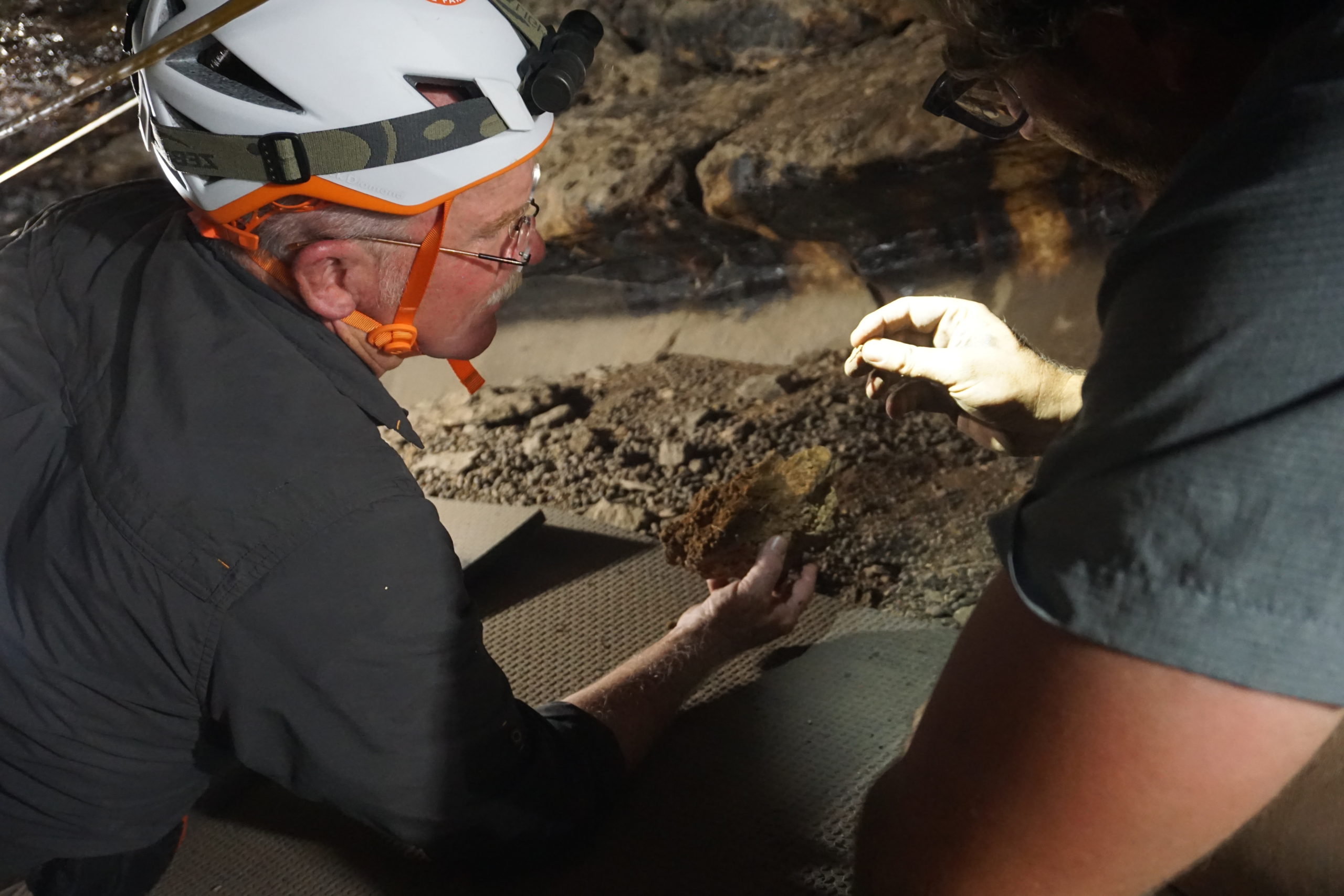Published March 25, 2021 in the Texas Journal of Science, authored by Jim I. Mead, Bryon Schroeder, and Chad L. Yost
ABSTRACT
We present new information about the Late Pleistocene Shasta ground sloth (Nothrotheriops shastensis). Spirit Eye Cave in the Sierra Vieja along the Rio Grande provides the newest evidence that the Shasta ground sloth inhabited further south in the mountains of the southwestern Trans-Pecos, Texas, than has been previously documented. The cave is one of only twelve known Nothrotheriops dung localities. During excavation of the cave, packrat middens and sloth dung were discovered. Two areas within the cave provide radiocarbon dated ground sloth dung and packrat midden macrobotanical remains which permit the reconstruction of the sloth diet and local biotic habitat at 30,800 and 12,900 calibrated YBP. The local community at 30,800 calibrated years ago was a pinyon-juniper woodland with yucca, sandpaper bush, globemallow, cactus, and barberry in the understory based on the packrat midden from the cave. The dung contents indicate that the diet of the sloth included C3 and C4 grasses along with Agave. Data for the local vegetation community and sloth diet from 12,900 years ago indicate that during this late glacial time, the region was still a pinyon-juniper woodland but also contained Celtis, Quercus, and Larrea, among other taxa.


